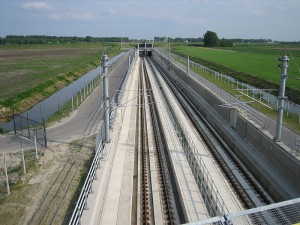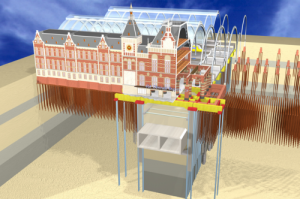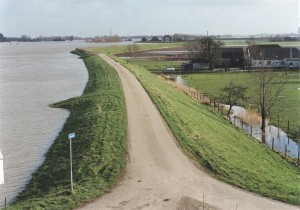Netherlands Experiences
High Speed Line (HSL Project) between Amsterdam-Paris
High Speed Line South Project, Holland: This was one of the largest European rail projects of recent times. 
This project provided the Dutch with a 300-kph railway from Amsterdam southward to the Belgian border, a distance of 125km.
The strict requirements for this project regarding the maximum allowable long-term settlement including secondary compression, considering the highly compressible organic soil of the Netherlands, made the design process of this project a real challenge. The design works include tunnelling (Rotterdam Tunnel), deep excavations and retaining structures.
North-South Metro Line Amsterdam
Beneath the Amsterdam Central Station an excavation was created for the proposed “immersed” tunnel.  The excavation width is 18m to a depth of 23m along the whole longitudinal section of the Station. The design concept was characterised by the need to apply an innovative technology in the form of the so-called ‘sandwich wall’. This is a composite wall consisting of two rows of steel piles with a body of jet grout columns in between. This wall needed to act both as an excavation retaining wall and also as a vertical bearing wall.
The excavation width is 18m to a depth of 23m along the whole longitudinal section of the Station. The design concept was characterised by the need to apply an innovative technology in the form of the so-called ‘sandwich wall’. This is a composite wall consisting of two rows of steel piles with a body of jet grout columns in between. This wall needed to act both as an excavation retaining wall and also as a vertical bearing wall.
Design Analysis included carrying out Finite Element Analysis for the design of the sandwich walls. The analysis predicted the anticipated settlements, deformations and stresses in the walls in order to demonstrate that the proposed works would not damage the historic station building.
Dikes improvement
This project involves taking every necessary measures to improve and reinforce the existing embankments as well to design new dikes along Waal and Maas rivers.  The rate of construction is specified so that reasonable safety factors for stability are ensured. The build-up pore water pressures during construction and also the time required for the dissipation of the excess pore water pressures are calculated. In many sites and due to the limited time available for construction, geotextiles and/or soil improvements are applied in order to improve the shear strength against sliding.
The rate of construction is specified so that reasonable safety factors for stability are ensured. The build-up pore water pressures during construction and also the time required for the dissipation of the excess pore water pressures are calculated. In many sites and due to the limited time available for construction, geotextiles and/or soil improvements are applied in order to improve the shear strength against sliding.